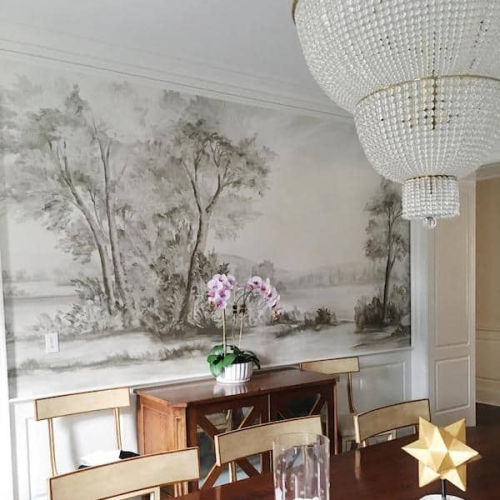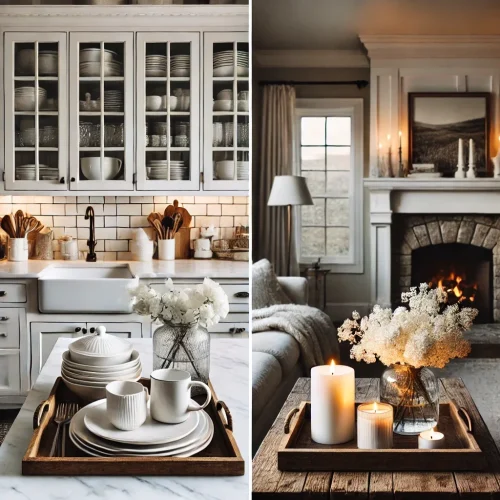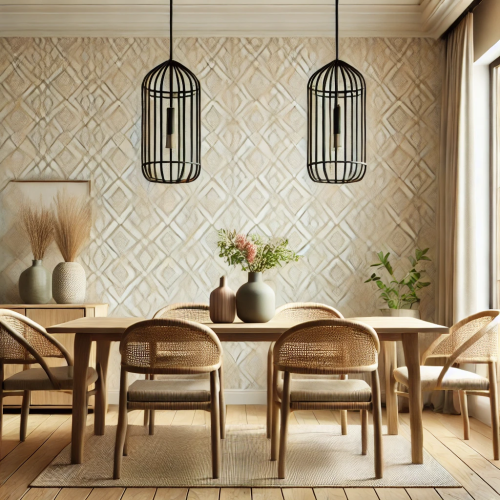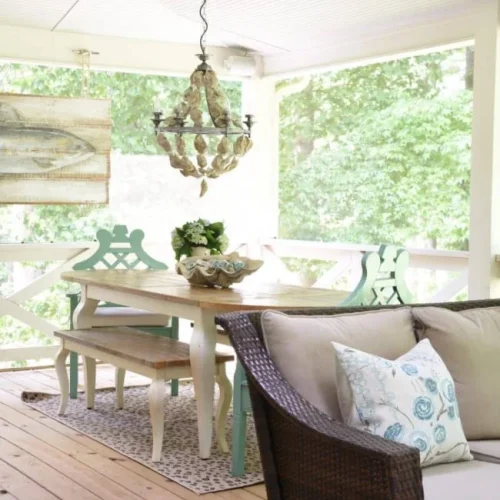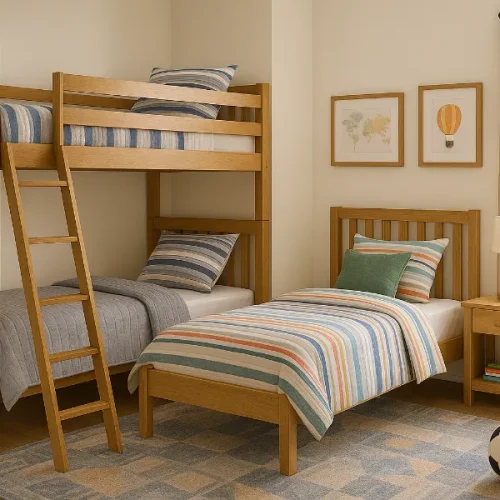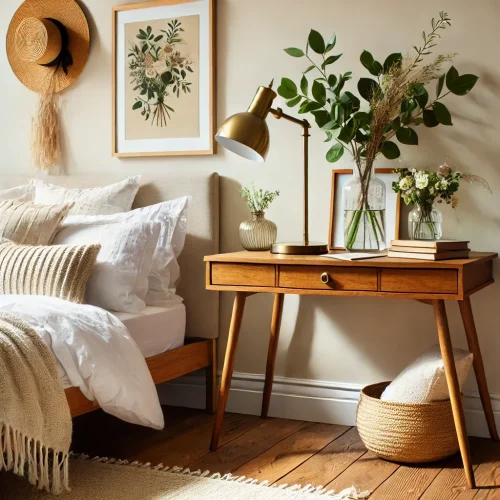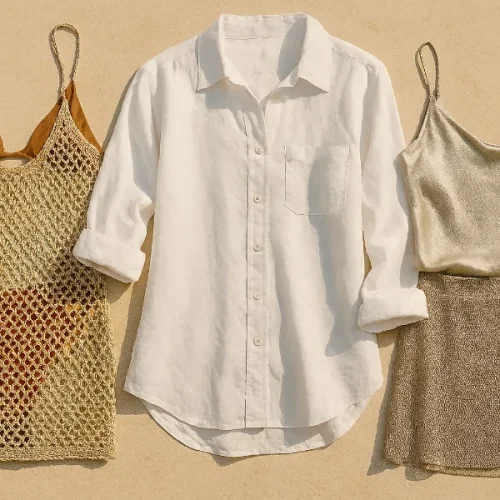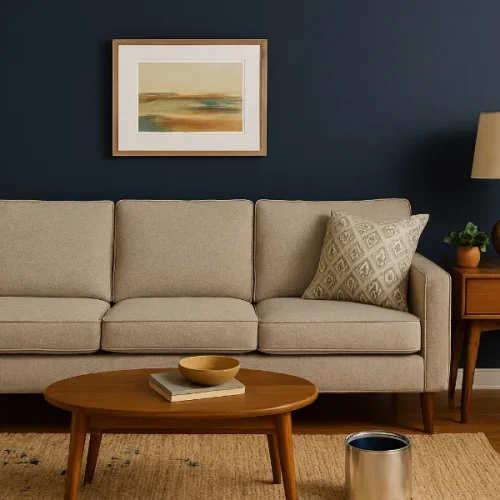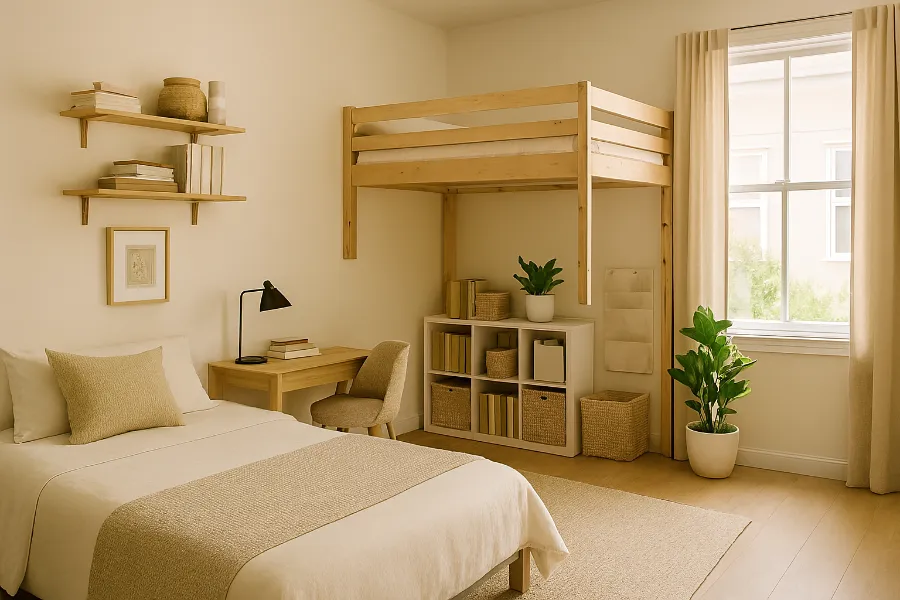
Living in a small room can feel cozy and frustrating all at once. On one hand, it’s easier to clean and maintain. On the other, clutter piles up quickly, furniture seems to swallow the floor space, and it feels like you never have enough storage. If you’ve ever looked around and wondered how to organize a small room without giving up comfort or style, you’re not alone.
The good news? Small rooms can work harder than you think. With smart organization techniques, multifunctional furniture, and a dose of creativity, you can turn even the tiniest room into a functional, stylish haven. Let’s break it down step by step.
Why Organizing a Small Room Feels Challenging
Organizing a small room isn’t just about putting things away. It’s about maximizing every inch without feeling cramped. The biggest challenges usually come from:
- Too much stuff. When storage is limited, even a few extra items can create chaos.
- Multipurpose needs. A single room might need to serve as a bedroom, office, and relaxation space.
- Clutter zones. Floors, desks, and corners easily become dumping grounds.
The solution isn’t more storage bins. It’s about thoughtful choices—knowing what to keep, how to arrange it, and how to make your space support your daily life.
Start by Decluttering
The very first step in figuring out how to organize a small room is to get ruthless about decluttering. You simply can’t organize clutter—you have to pare down.
- Purge duplicates. If you have three pairs of scissors or two blenders, keep the one you use most and donate or sell the others.
- Let go of “someday” items. If it hasn’t been used in the past year, chances are it won’t be in the future.
- Sort by categories. Pull everything out (closet, drawers, shelves) and group like items together so you can clearly see what you own.
One smart approach is the one in, one out rule—every time you bring something new into the room, something else has to go. This keeps clutter from creeping back in.
For items you’re removing, set up three piles: donate, recycle, or sell. Keep a strict timeline so these items don’t turn into a new pile of clutter.
Define Zones Within the Room
Small rooms often have to do double—or triple—duty. Without clear boundaries, things get messy fast. Defining zones helps you stay organized and gives the room a sense of structure.
For example:
- Sleep zone. Keep this area as clear as possible, with minimal furniture around the bed.
- Work zone. A compact desk in one corner or a fold-out wall desk can define your workspace.
- Relaxation zone. A small chair or reading nook can give you space for downtime.
Use visual cues to separate zones: a rug under the desk, shelving for toys in a kid’s room, or a rolling cart that moves between functions. Even in the tiniest of rooms, small adjustments like these make it easier to keep order.
Maximize Storage Solutions
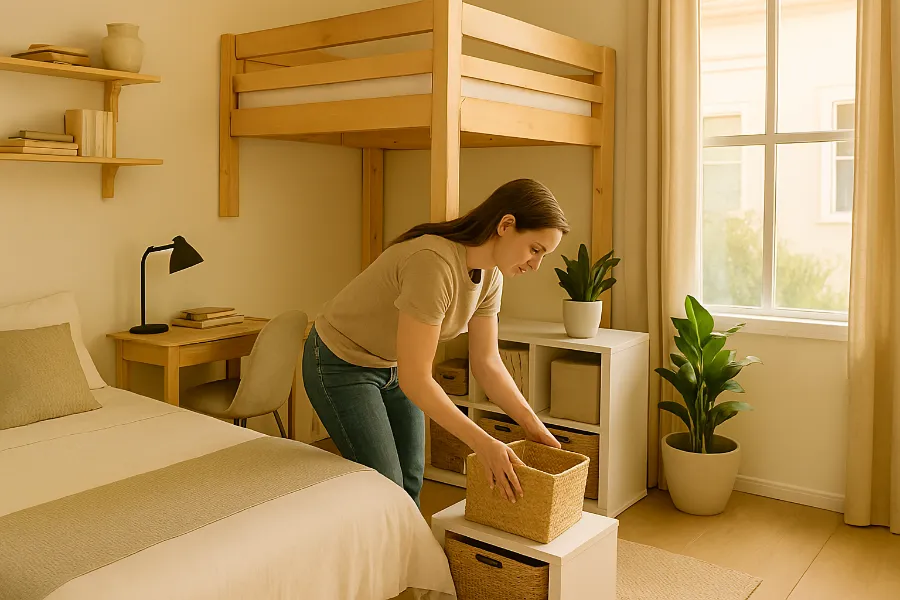
When floor space is scarce, every inch of storage counts. Here are some proven ways to squeeze in more storage:
- Closet hacks. Install double hanging rods, add shelf risers, or use slim storage bins at the top and bottom of the closet.
- Under-bed storage. Choose storage bins with wheels, or consider a bed with built-in drawers.
- Hidden storage furniture. Ottomans with storage, bed frames with lift-up mattresses, or nightstands with drawers make a huge difference.
- Cube organizers. Modular cube systems are perfect for books, baskets, and decorative storage.
Don’t overlook small corners—an empty wall near the door might fit a narrow shoe cabinet, and a corner can hold a tall bookshelf.
Use Vertical Space
When you can’t go out, go up. One of the best tricks for how to organize a small room is using vertical storage.
Ideas include:
- Wall-mounted shelving for books or decorative storage.
- Pegboards for craft supplies, jewelry, or office tools.
- Hanging organizers on doors for shoes, accessories, or toiletries.
- Loft beds to create extra space for desks or seating underneath.
Think of walls as potential storage. Floating shelves and hooks not only save space but also free up the floor, making the room feel larger.
Keep the Floor Clear
Nothing makes a small room look cluttered faster than a floor covered in shoes, laundry baskets, or storage bins. To instantly make your space feel bigger:
- Store shoes off the floor. Use hanging shoe racks, cubbies, or under-bed bins.
- Avoid floor piles. Toys, clothes, or bags belong in bins, baskets, or hooks—not in the corner.
- Choose floating furniture. Wall-mounted nightstands, shelves, and desks create more open space below.
Clear floors don’t just look better—they make cleaning easier too. Vacuuming or sweeping is much simpler when you’re not tripping over clutter.
Be Selective With What Comes In
Small rooms demand discipline. Once you’ve decluttered, it’s tempting to buy new things. But the truth is, keeping a small space organized depends on being choosy.
- Say no to extras. Well-meaning friends or family may offer items you don’t need. Be honest and polite, but firm.
- Choose multipurpose pieces. A storage ottoman, a fold-out desk, or a bench with hidden storage gives you more than one use in the same footprint.
- Plan before buying. Ask yourself: Where will it go? What will it replace? Will it add clutter?
Think of new items as commitments. If it doesn’t fit your system, it doesn’t come in.
Add Personality Without Clutter
Organization doesn’t mean sterile. Even the smallest room can feel warm and personal with the right touches.
- Lighting. Wall sconces, string lights, or a bold floor lamp free up table space while adding ambiance.
- Mirrors. Mirrors make small rooms feel larger and reflect light to brighten the space.
- Accent walls. A single wall of bold paint, wallpaper, or wood paneling adds personality without adding physical clutter.
- Decorative baskets. They double as storage and décor.
The key is functional beauty. Choose items that look good but also serve a purpose.
Maintenance Tips for Staying Organized
The hardest part of organizing a small room isn’t the setup—it’s the maintenance. A few habits can keep your room looking fresh:
- Daily reset. Spend 5–10 minutes at night putting items back in their place.
- Weekly check-ins. Do a quick sweep to remove items that don’t belong.
- Seasonal decluttering. Rotate clothes, décor, and storage every few months to keep things relevant.
Organization isn’t a one-time project. It’s an ongoing practice. By creating routines, you’ll keep clutter from sneaking back in.
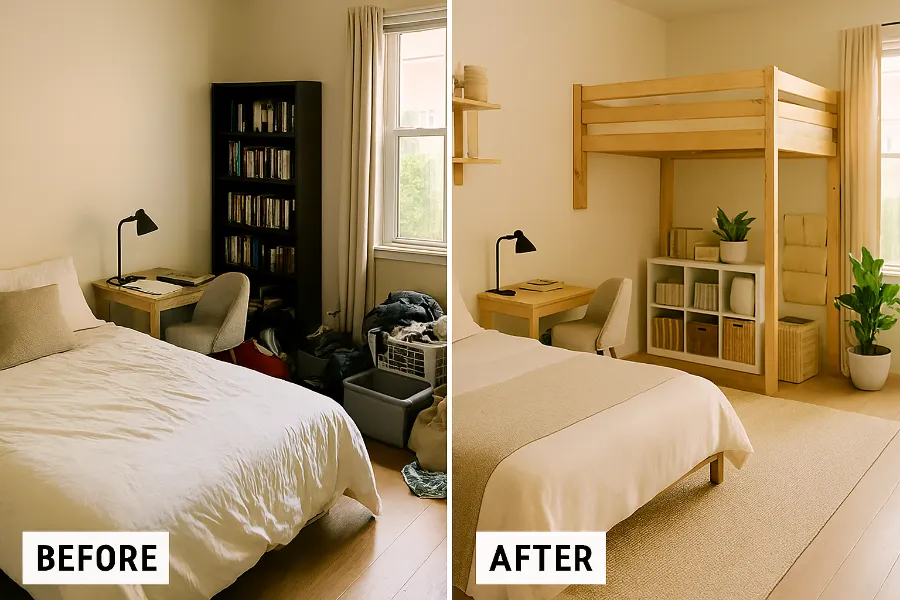
Final Thoughts
Learning how to organize a small room isn’t about squeezing in as much as possible. It’s about intentional choices—keeping what matters, creating smart zones, and making your space work for you.
When you declutter ruthlessly, use vertical space, and get creative with storage, your small room will feel larger, calmer, and far more functional. And the best part? Once you’ve done the work, maintaining it becomes second nature.
So grab a donation box, a measuring tape, and your favorite storage bins. Your small room has big potential—you just need the right strategy to unlock it.


